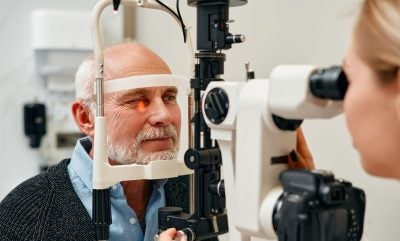
Roche reported the latest 72-week data from two Phase III trials, BALATON and COMINO, in which its bispecific antibody Vabysmo (faricimab) demonstrated to be effective in treating macular oedema due to branch and central retinal vein occlusion (BRVO and CRVO).
The multicentre, randomised, global double-masked trials analysed the safety and efficacy of Vabysmo versus aflibercept.
BALATON enrolled 553 branch retinal vein occlusion patients, while the COMINO study was conducted in 729 people with central retinal or hemiretinal vein occlusion.
Participants were initially randomised to receive monthly injections of either Vabysmo (6mg) or aflibercept (2mg) for the first 20 weeks. From weeks 24 to 72, all subjects received the antibody up to every four months, following a treat-and-extend dosing regimen.
The variation from baseline in best-corrected visual acuity (BCVA) was the primary endpoint at 24 weeks.
Secondary endpoints for the initial 24 weeks included variation in central subfield thickness (CST) and the retinal fluid drying.
For the period from weeks 24 to 72, the focus shifted to changes in BCVA and CST from baseline, as well as the proportion of people on treat-and-extend intervals.
According to the findings, nearly 60% of participants in the BALATON trial and up to 48% in the COMINO trial were able to extend their treatment intervals to three or four months following Vabysmo administration.
This data indicates a significant increase compared to the typical one to two months for existing retinal vein occlusion (RVO) treatments.
Moreover, patients had vision gains, and retinal drying was achieved in the first 24 weeks for over a year.
Vabysmo was well tolerated, with the safety profile in line with prior trials.
The average change in BCVA score from baseline and the reduction in swelling due to retinal fluid, as indicated by CST measurements, showed that the improvements seen in the first 24 weeks were sustained up to 72 weeks.
Roche Global Product Development head and chief medical officer Levi Garraway said: “This is the first time that vision and anatomical improvements have been maintained for more than a year in global Phase III studies for both branch and central retinal vein occlusion.
“These long-term results build on the strong clinical and real-world data reinforcing Vabysmo as an effective treatment option for people affected by retinal conditions that can cause vision loss.”



